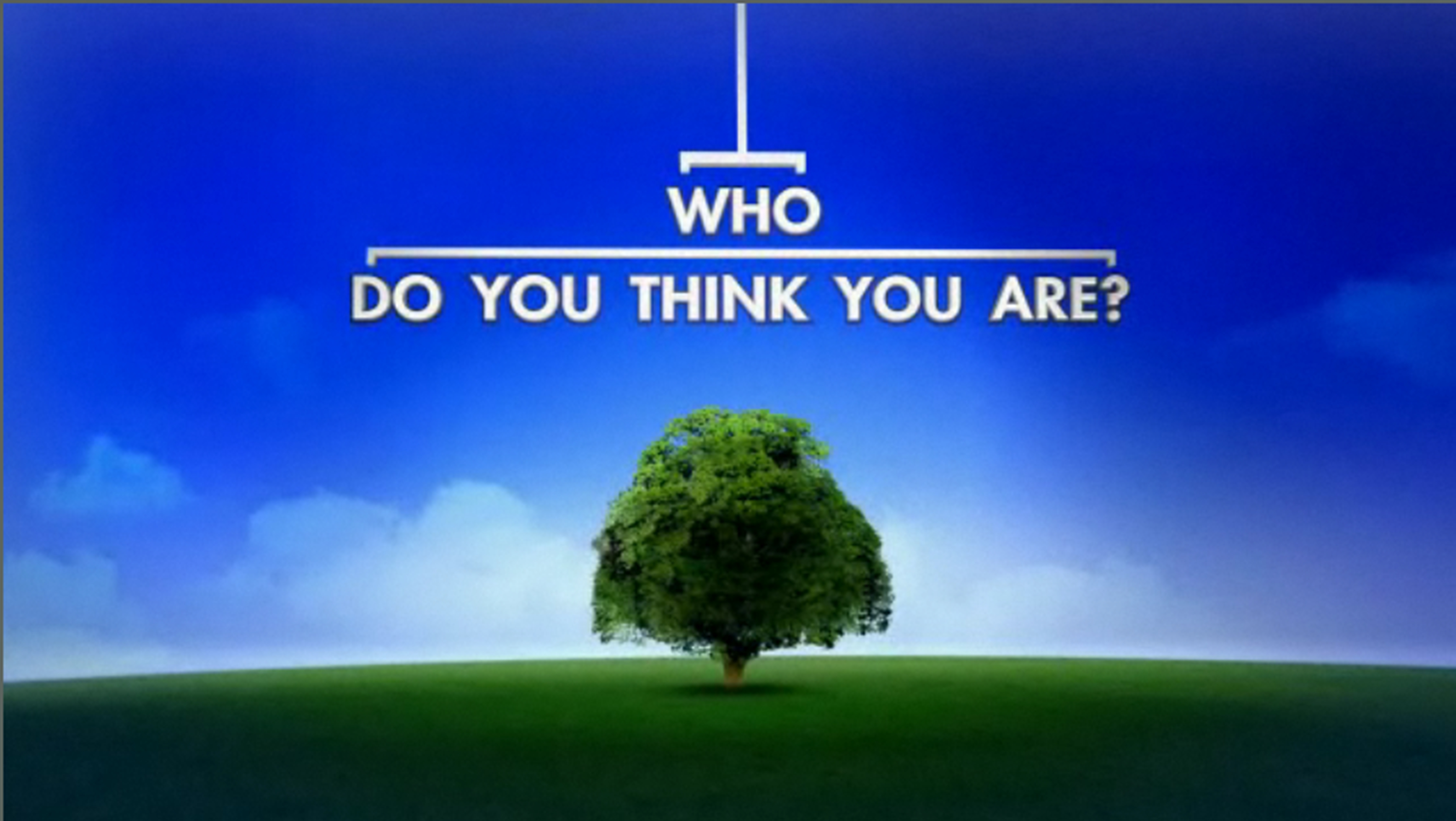I’ve been watching Who Do You Think You Are? How about you? I enjoy following the celebrities in their journey to discover their ancestors. Now what occurs to me about this show is why do I care about other people’s genealogy. Well, I’m a genealogist, so yes, I am interested. Of course, there is the aspect that they are celebrities. However, to make this show successful the show needs to appeal to a wider audience, and that means there needs to be a great story that captures the viewer’s attention, even non-genealogists.
The same applies to our family history. We want our family to read about their ancestors; we want them to sit up and take an interest. However, our family are not genealogists so we need to appeal to them in a different way than as if we were writing for other genealogists interested in our research.
So perhaps we can learn a little something from the producers of Who Do You Think You Are? What makes this show so popular? What storytelling lessons can we learn? How can we apply them to our family history writing.
There is a plot – whether you realize it our not, very episode has a plot. The celebrity is on a mission to answer a question about their family history. Each celebrity in their journey faces, obstacles, further questions that they need to overcome in their quest. However, there is also the secondary plot, the journey of the ancestor, their story is also playing out for us. In Who Do You Think You Are? both the celebrity and the ancestor faces obstacles, conflicts on their road to their goal.
You should also be structuring your stories in the same manner. If you’re writing just about your ancestor, then your story needs to be structured around a struggle to a goal that your ancestor faced. If you’re writing about your pursuit to uncover you ancestor’s life then you must structure your journey in terms of your obstacles in the quest for your answers. I think the easiest way to find the plot is to look for the accomplishments and then work backwards, looking for the obstacles, either those your ancestor faced or you faced in your research.
For Example:
Josh Groban – sets out to learn about his mother’s lineage and traces the trail of his 8x great-grandfather. He discovers a brilliant man who was a deacon, music teacher, and a well-known astronomer. However, Josh finds that his ancestor’s predictions of cataclysmic doom put him in opposition to the church.
Angie Harmon- On her journey, Angie uncovers the dramatic story of her 5X great-grandfather, who endured hardship and danger as an immigrant coming to America. She discovers that he fought in the American Revolution and risked death for standing his ground.
There is a theme. Every story has a theme and Who Do You Think You Are? does an excellent job of finding a theme and giving us a teaching moment for the celebrity. It’s important to centre your story around a theme. Find a focus for the story, an idea that emulates from either your journey or from your ancestor’s life.
For example:
Julie Chen – in Julie’s episode education is a huge theme. Julie uncovers how education greatly influenced her ancestor’s life including her grandfather Lou Gaw Tong, and her great-grandfather, head of the department of education. Giving Julie a new found appreciation for the great depth in her family history.
Sean Hayes – Sean’s story centers around the father figure. Sean is estranged from his father with a troubled past and goes on a quest to discover the root of the problem. Sean’s journey takes him to Chicago where he uncovers the sad details of his grandfather’s early death on skid row. Sean then follows his ancestral trail to Ireland, where court documents show the chaos in the Hayes family runs generations deep. Through Sean’s search, he deepens his understanding of his father and appreciate that he’s broken a turbulent family pattern on his own, perhaps offering Sean, a little more empathy for his father.
We make an emotional connection. I would be hard pressed to say I didn’t cry through my fair share of episodes. Why is that? There are two things at play. The producers have done a beautiful job of bringing the ancestors to life for us. They have given us characters in the celebrity’s ancestor, with hopes and dreams, failures and successes. It pulls us in emotionally either through our connection with the ancestor or by seeing how the celebrity is connecting to the story. Either way, the producers have used their research to make the ancestors real to the celebrity to the viewers.
It’s important for us to do the same in our own stories. We want to bring our ancestors to life in our stories, giving the readers an opportunity to make an emotional connection with them. In our stories, this is best achieved through characterization. Characterization is a writing tool that helps us to find our ancestor’s personality in our research and bring that personality to the page, the focus of our Workbook Number 2, Authentic Ancestors.
For example:
Julie Chen – From this year’s episode, the producers were able to show us the character of Julie’s grandfather, through his actions in the war and his commitment to bringing education to his village. We get a very clear understanding of his strengths and his beliefs. Therefore, when Julie visits the school her grandfather built it becomes a very emotional moment for her and the viewer.
Christina Applegate – One of the most emotional episodes in my memory belonged to Christina Applegate. Christina seeks to find the story of her grandmother. The information she uncovers, shows a women who lead a very difficult life and faced great personal struggles. But when they discover an incredible gesture her grandmother makes in providing a final resting place for her son, we truly see a mother’s love. Christina finds her grandmother’s final resting place and brings her father to visit, he is able to find and reconnect with his mother.
Scenes and Settings bring the story to life for us. In this year’s episodes of Who Do You Think You Are? we jet off to great locations, like Ireland and China. We watched Angie Harmon walk on the land of her ancestor, Julie Chen tour the school of her grandfather and Sean Hayes visit the court-house where his ancestor was charged. The producers place us in the places where the ancestor’s life played out, where significant events happened.
Scenes and setting offer you the ability to transpose your readers to another place and time. Setting offers your readers details and description so that they time travel, while writing scenes provides your reader the ability to see the events playing out before them on the page.
A main character to focus on. Notice in every Who Do You Think You Are? episode there is one central character, one ancestor that the producers set their sole focus on. Sure there might be some backstory, a bit about the family tree in general. But before too long we are pulled into a story about one ancestor and that is where the majority of the story is told. The producers don’t try to tell us too much about a lot of ancestor’s in the celebrity’s tree. They find one ancestor who plays an interesting or pivotal part in the celebrities history and they shape the family history around them.
In our stories, we too need to find that one ancestor. Don’t try to tell every ancestor’s story in one large story. Focus your family history around a main ancestor. Find your protagonist ancestor and tell your family history from their prospective. Authentic Ancestors provides some exercises to help you find your story ancestors.
Social History. The producers make great use of social history to help paint a picture of what was taking place at the time of the celebrities ancestors. The producers often direct celebrities to social historians who can explain what is happening at the time to get a deeper understanding of their ancestor’s actions.
By exploring the history and social history of the time, you can but your ancestor’s actions into context. You can get inside their heads and perhaps see the whys behind their decisions and actions. As a family history writer, world, regional and local history along with social history play an important role in shaping your stories and understanding the motivations and stakes behind your ancestor’s actions.
Next week, watch Who Do You Think You Are? through the lens of a writer. Alternatively, catch up on past episodes here. Look for the main character, the theme, the plot, the setting and scenes. Then apply these same principles to your storytelling.


